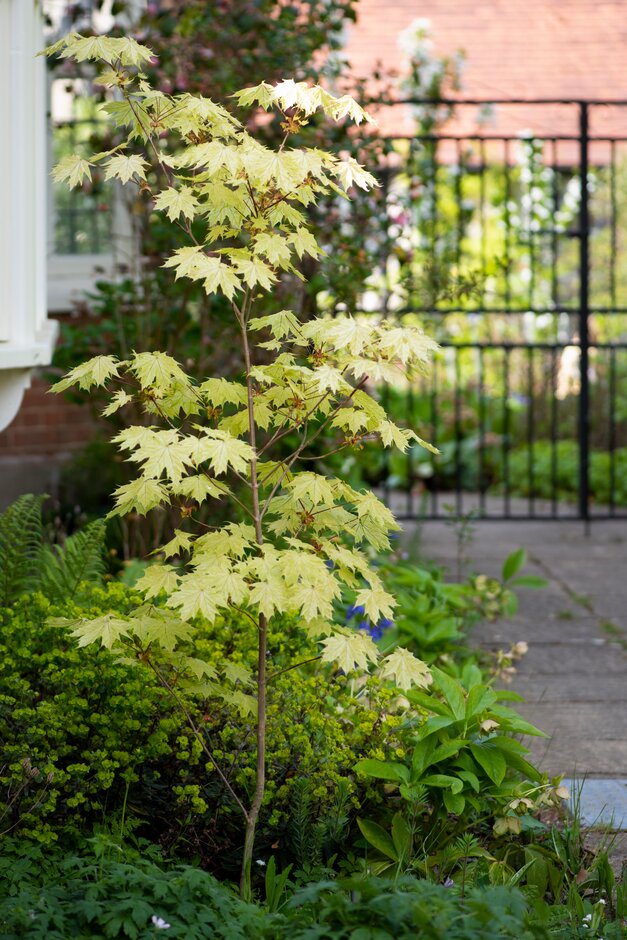Acer platanoides 'Walderseei'
Norway maple 'Walderseei'
A medium-sized, spreading deciduous tree to 15m tall. Irregularly-lobed leaves open creamy-yellow in spring before turning green with dense white speckles giving the foliage a greyish appearance when viewed from a distance.Small yellowish-green spring flowers are followed by winged fruit
Size
Ultimate height
Higher than 12 metresTime to ultimate height
20–50 yearsUltimate spread
Wider than 8 metresGrowing conditions
Moisture
Moist but well–drained, Well–drainedpH
Acid, Alkaline, NeutralColour & scent
| Stem | Flower | Foliage | Fruit | |
| Spring | Yellow Green | Cream Yellow | ||
|---|---|---|---|---|
| Summer | Green Grey Silver White | |||
| Autumn | Green Yellow | Brown | ||
| Winter |
Position
- Full sun
- Partial shade
Aspect
South–facing or North–facing or West–facing or East–facing
Exposure
Exposed or Sheltered Hardiness
H7Botanical details
- Family
- Sapindaceae
- Native to GB / Ireland
- No
- Foliage
- Deciduous
- Habit
- Bushy
- Genus
Acer can be deciduous trees or large shrubs with paired, often palmately-lobed leaves and small flowers followed by characteristic winged fruits. Many have fine autumn colour, and some have ornamental stems
- Name status
Accepted
How to grow
Cultivation
Grows best in a moist but well-drained soil in partial shade
Propagation
Propagate by grafting
Suggested planting locations and garden types
- Architectural
- Cottage and informal garden
- Wildlife gardens
- Low Maintenance
Pruning
Pests
May be susceptible to Acer gall mite, aphids, caterpillars and horse chestnut scale
Diseases
May be susceptible to Verticillium wilt, Acer leaf scorch and honey fungus
Get involved
The RHS is the UK’s gardening charity, helping people and plants to grow - nurturing a healthier, happier world, one person and one plant at a time.
